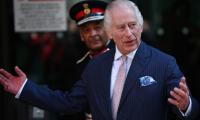Foreign Minister Shah Mahmud Qureshi on Sunday, April 7, in a press briefing in Multan, announced that the government had “reliable” information that India was planning another attack on Pakistan. He revealed that during a meeting of the Indian Cabinet Committee on Security, the three service chiefs had indicated that they were ready with plans of multiple strikes against Pakistan across a wide front and were awaiting a “political nod”, which was duly given by PM Modi during the meeting.
After the political boomerang of the failed Balakot strike, simple statistical theory would suggest to the military mind that the larger the number of strikes next time the higher the probability of at least one succeeding. The chances of partial success would increase if the air attack is across a wide front: the defending air force would have to spread itself thin and so the number of intercepting aircraft that could be fielded against any one group of attackers would be reduced.
Such a military adventure by India would not simply be a repeat strike after Balakot. It would be a precipitous escalation, fraught with the risk of full-scale conventional war that could quickly lead to a catastrophic nuclear exchange. When India suffered a setback in the Balakot engagement, they reportedly readied themselves for a missile strike against three Pakistani cities on the night of February 27.
There is no technology in existence that can determine whether or not incoming missiles have a nuclear payload. So Pakistan’s declaration that they would launch triple the number of missiles in retaliation, as soon as Indian missiles left their launch pads, carried the grim possibility of a nuclear war in the Subcontinent. If we had come so close to Armageddon soon after even a single abortive strike, imagine how much greater would be the risk of escalation to the nuclear level during a full-scale conventional war.
At present, and in the foreseeable future, two aspects of the structure of the India-Pakistan relationship create a hair trigger that can quickly and repeatedly bring the two countries to flashpoint. First, a popular freedom movement in Kashmir that, despite their protracted coercion, Indian security forces have been unable to suppress. It has instead produced a pantheon of martyrs and a new generation of militant youths willing to sacrifice themselves for freedom. Under these circumstances the internal dynamics of the Kashmiri movement can generate acts of violent rebellion against Indian troops at any time.
Second, on the other side of the border for many years non-state groups of militant extremists who have off and on received patronage continue to exist. The toxic mix of these two elements creates an environment in which spectacular acts of violence by Kashmiri youth could be blamed on “Pakistan-based terrorists” by India. This could intensify tensions, precipitating another military conflict. The past cannot be taken as a guide to say how it will end, whether in peace or nuclear war.
Given the firepower of modern conventional weaponry, significant loss of territory can occur during the initial onslaught that could escalate to the use of battlefield nuclear weapons. Once nuclear weapons are used on enemy troops, all-out nuclear war would follow. The recent history of India-Pakistan military conflict however has shown that even before a full-scale conventional war, a limited, localised battle can bring the two sides to the nuclear precipice.
For example, during the Kargil conflict in 1999 when the then prime minister Nawaz Sharif flew to Washington to ask the then US president Clinton to help end the conflict, he was shown satellite pictures of nuclear weapons being loaded onto F16s as evidence for a shocked PM of how close the two countries were to a nuclear war. Then again during the first two days of the February 2019 conflict involving limited Air Force engagements, nuclear missiles were reportedly readied on the night of February 27 for use by both sides.
So far these confrontations have induced timely intercession by the international community and peoples of the Subcontinent have survived by the skin of their teeth. But what a future confrontation will bring, whether we live or die in a nuclear war is inherently uncertain. Its probability cannot be estimated.
Some take comfort in the fact that seven confrontations in the past did not result in full-scale war as international pressure to defuse tensions worked. However, this 100 percent success in preventing war in the past cannot be used as a basis for saying it will not occur the next time around. This is because in society as much as in the relationship between states the averages of the past do not necessarily hold into the future. This is unlike natural phenomena where averages of the past as expressed in natural laws do hold into the future.
For example, take the law of gravity: if you had dropped an object and it fell to the ground yesterday, there is a high probability that it would fall again if you dropped it tomorrow. But in society, probability estimates which are essentially based on projecting the past into the future are not possible in principle. The pattern of social phenomena and human behaviour observed in the past can in the future be shattered by unique events or a combination of unique events.
As the preceding discussion argues, even a limited conventional conflict following a terrorist incident can quickly escalate to the nuclear threshold. It is vital, therefore, for the two countries supported by the world community to address the explosive structure of a situation that leads to repeated military confrontation.
Millions of citizens in both countries are mired in poverty, illiteracy and disease. Thousands of children are dying at birth every day; of those who survive birth, thousands die before they are five years old. Of the children who live beyond five years, millions are suffering from malnutrition, their bodies stunted, their brains dulled. Millions of children roam the streets and alleys, deprived of quality education, abandoned by society and state and living without hope. Instead of halting this massacre of innocents together, the two states are marching in lockstep to a nuclear catastrophe.
It is time for the leaderships of both India and Pakistan to reflect on the irrationality and inhumanity of using proxy wars or ‘surgical strikes’ as a means of achieving national security. The power of a nation lies not in following the course of mutual annihilation but pursuing the path of peace for the welfare of its citizens. The leaderships of the two countries should dip their cupped hands into their shared civilisational well-springs. Imbibe the sense of compassion and human solidarity to care for our children rather than killing them.
The writer is a dean at theInformation TechnologyUniversity Lahore.
Email: akmal.hussain@itu.edu.pk
A representational image showing a man holding national flag as he walks along a street in Islamabad. — AFP/FileThe...
River Ravi is estimated to contribute more than 80 per cent of the recharge the Lahore aquifer requires, according to...
During January-March this year PTCL lost Rs4.8 billion, but before privatization, it was hugely profitable
In the US, there is a growing requirement for companies and businesses to disclose their carbon emissions
There are no consequences for wrongdoings, big or small, which has just encouraged more wrongs
Tax ecosystem will be transparent, and all stakeholders will be well-informed







